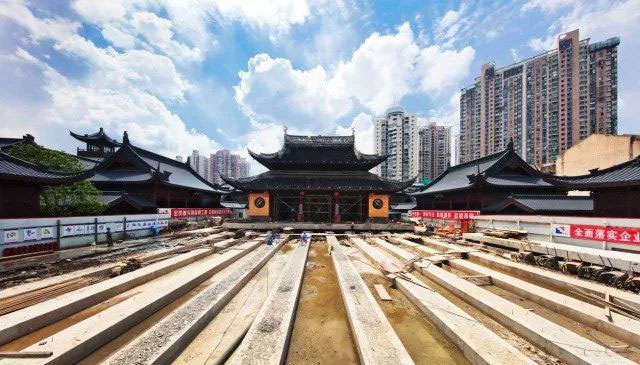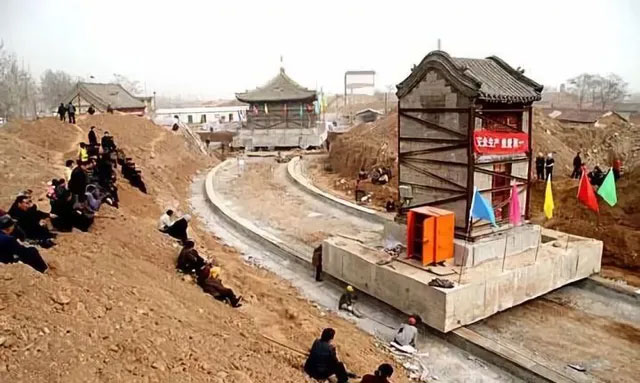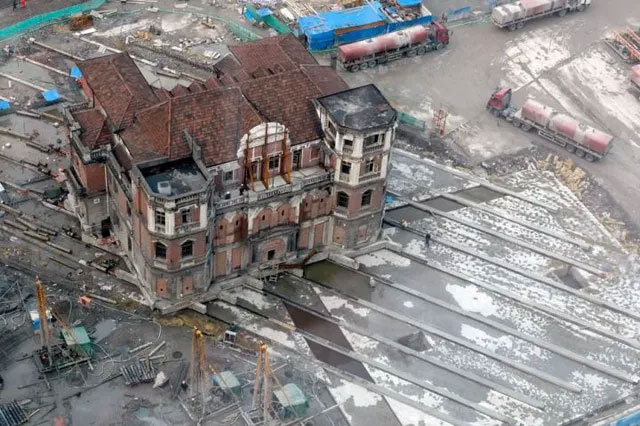The method of relocating entire buildings is not originally from China, yet whenever this topic arises, most people immediately think of China.
China is a rapidly developing country, and as a result, it has constructed many urban areas, cities, and new architectural projects to keep pace with modern life.
However, urban planning is not an easy task, and sometimes implementation plans may change direction. Consequently, many older buildings seem to be situated in locations that no longer align with new development trends. Therefore, demolishing and rebuilding certain structures is quite understandable.
But what about historic buildings and those with significant cultural value?
The most common approach that comes to mind is to partially demolish the original structure and reconstruct it in a new location using materials from the original architecture. Although the building has been demolished and rebuilt, nearly every brick and tile remains as it was originally. To ensure that restoration projects maintain the original appearance of historic buildings, the term “restored to original” has emerged in cultural heritage projects, meaning that as many old, original materials should be used as possible.
However, the method of overall relocation has become a preferred choice in many places across the country. This method not only preserves the integrity of the building’s structure but also maintains its original appearance and the integrity of its historical value. To visualize this better, this method essentially involves lifting the original architectural structure and moving it to a new location without causing any damage to the building.
It may sound unbelievable, but from 1980 to 2019, China successfully completed the overall relocation of 136 buildings. Compared to European and American countries, China is about 60 years behind in employing this method. However, in terms of the number of buildings relocated, China’s figures surpass the combined total of all those countries. Due to this impressive number, China has even been dubbed the “genie” in the field of moving buildings and architectural structures.

The Jade Buddha Temple (玉佛禅寺) in Shanghai, which was completely relocated.
On June 6, 2005, the overall relocation of three cultural heritage buildings weighing a total of 3,500 tons at Ciyuan Temple (慈源寺) in Henan, China, was completed. This temple is over a thousand years old and is also a key cultural heritage site in the country. However, there is always the reality that ancient architectural structures often “collide” with modernization. In 2004, a highway from Anyang to Linzhou in Henan was planned, and it would pass through the site of this temple.
Thus, the city faced two choices: either relocate the ancient temple or build the highway around it. Choosing the latter would mean destroying a village. Consequently, government officials and experts discussed for a year and a half and ultimately decided on a two-pronged approach – to completely relocate the three most valuable ancient buildings.
At that time, China’s overall relocation technology was not as advanced as it is today. Additionally, the structures of the three ancient buildings were not like modern buildings made of reinforced concrete; these ancient buildings were constructed from thousands of clay bricks. So how could the integrity of these three structures be ensured during the relocation process? This posed a significant challenge during the move.

The foundation of the original building will be cut off, and the remaining structure will be securely attached to a vehicle frame. (Illustrative image)
The first step in this process is to create a strong and stable chassis for the original building, which is usually a reinforced concrete structure. The foundation of the original building will be cut off, and the remaining structure will be securely attached to the vehicle frame and reinforced with epoxy resin technology. This reinforcement makes the original structure a cohesive whole that is not easily dispersed, turning it into a “box” that can be moved.
In addition to stabilizing the original building’s structure, this relocation requires sturdy, smooth tracks and rollers between the starting and ending points. After that, under the pull of modern equipment, the structure will move at a constant speed to the predetermined location. Additionally, the fixed foundation is concurrently constructed at the predetermined location, allowing for the building to be relocated into place upon arrival.
However, the terrain is not always flat; even a slight deviation in force at the corners and slopes can cause the structure to derail and be destroyed.
Therefore, engineers had to adjust the size of the rollers and foundation grooves depending on the terrain of each section, and the thrust force must exceed the total weight of the structure.
Ultimately, the three ancient buildings reached their destination safely after navigating 13 turns over a total distance of 1,256.02 meters during the five-month “migration.”
The overall relocation of historical buildings is a form of respect and concern for preservation. However, in reality, over the past 30 years, some ordinary office buildings, residential buildings, and even hotels have also utilized this technology.
In early 1992, a massive shaft tower in a coal mine was moved 75 meters, marking the beginning of the overall relocation of modern structures in China.
Just a year later, a building known as the “Observatory” on the Bund was relocated to a new position 24.2 meters away from its original location. In the same year, an office building in Chongqing also completed its overall relocation using this method.

In 2010, a middle school in Shanghai was relocated using this method.
In 2019, engineers in Xiamen, Fujian, China successfully relocated an entire bus station weighing over 30,000 tons to make way for a new high-speed train line.
To ensure stability during the move, the project team applied a walking-style push-pull relocation technology, marking the first application of this technology in the relocation of large structures in China.
The main building of the Houxi Long-Distance Bus Station in Xiamen has a construction area of 22,800 square meters and a total weight of over 30,000 tons. The main station has a total of five floors, including three above ground and two underground. This project relocated the bus station a distance of 288 meters and rotated it 90 degrees.
In 2020, a 100-year-old building weighing 2,600 tons in Jinan, Shandong, China was spectacularly moved 50 meters east, then rotated 20 degrees and moved 26 meters north. The entire process of relocating the building took only 82 minutes. Before moving the building, the original position was reinforced and raised by 1.65 meters, and then placed on a self-propelled modular trailer (SPMT) – a series of super-large logistics transport equipment with its own steering developed from hydraulic modular trailers, providing technical logistics solutions for the overall transportation of super-large, super-long, and oversized goods that are not easily separable and transported.

More recently, on July 8, a 100-year-old building in Shanghai was relocated to another position using sliding tracks and pushing in a renovation project. This structure weighs 3,800 tons and is the largest and heaviest building to be moved in the city.


















































